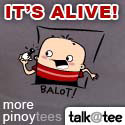Microprocessor Systems
Microprocessor Systems
Microprocessor systems, as the title implies, is the study of microprocessor systems — groups of electronic circuits that serve individual functions on their own, but can make a gadget or device perform a range of pre-programmed tasks when systematically connected. They operate the same way CPUs of computers do, but since they are typically used in smaller and simpler machines or devices, the tasks that they perform are typically more limited.
Applications
Microprocessor systems are present in almost every appliance, machine, gadget, and device that we use everyday. Below are some examples.
Engineering
Plenty of machines and devices that are used in the different fields of engineering are ran by microprocessors. Examples of these are voltage meters which are used to measure voltage and automated assembly lines that can work without human intervention through pre-programmed tasks. Sensors that alert safety officers when working conditions in the workplace have reached dangerous levels are also ran by microprocessors.
Transportation
GPS systems, a staple feature in many vehicles that allow people to get from one place to another by providing driving or walking instructions to the driver rely on microprocessors to work, so do traffic management systems that manage traffic lights as well as airbags that automatically deploy when an imminent crash is detected.
Communication
Most communication devices also run on a microprocessor system of some sort. Common examples of these are mobile phones, landlines, Wi-fi modems/routers, bluetooth headsets, walkie-talkies, and intercoms to name a few.
Notable People
Ted Hoff Jr.
Ted Hoff Jr. is an electrical engineer that invented the first commercial microprocessor. Thanks to his vision and eventual development of a single electronic chip that can control different electronic processes as opposed to the multiple chips that were commonly used at the time, smaller and faster computer units that can perform more complicated tasks became cheaper and easier to produce — making them more easily available to the general public.
Diosdado Banatao
Diosdado “Dado” Banatao is a Filipino engineer, inventor, and businessman notable for “developing the first single-chip 16-bit microprocessor-based calculator, the first 10-Mbit Ethernet Media Access Control (MAC) and Physical Layer transceiver chip, and the first system logic chipset for the PC-XT and the PC-CAT, among others.”
After founding a series of successful companies that eventually sold for hundreds of millions of dollars, Banatao eventually branched out into investing — exclusively focusing on companies working on semiconductors and semiconductor-related technologies.
He is the current chairman of Philippine Development Foundation (PhilDev), a non-profit organization that provides scholarship programs to Filipino students interested in pursuing a career in the fields of science and engineering as well as training opportunities to aspiring Filipino entrepreneurs who also wish to enter the tech industry.
Robert Noyce
Robert Noyce was an American engineer who, together with Jack Kirby, developed the microchip which eventually became the driving power behind a lot of electronic devices including computers and calculators.
He eventually founded tech giant Intel Corporation with Gordon Moore, and, together, they were often cited as instrumental figures in the establishment of what is popularly known as Silicon Valley — a region in the USA where billion-dollar companies like Facebook, Apple, Google, HP, Oracle, and Amazon among several others are headquartered.
Resources for Further Reading





